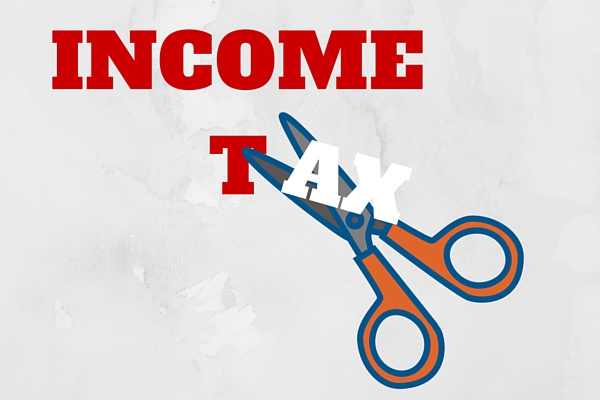Within the Finance Invoice 2023, a brand new provision was sneaked wherein impacts taxation on debt funds. It takes away one of many promoting factors of those funds in opposition to Financial institution FDs – long run capital beneficial properties tax together with indexation advantages. This has led to a flutter within the minds of traders and several other questions too.
I’m taking the highest questions and sharing my perspective together with the information. The questions are:
- What’s the new taxation? Which sort of funds are impacted?
- Oh, ought to I promote my investments earlier than March 31, 2023?
- Do debt funds nonetheless make sense as an funding or Financial institution FD is best?
- Ought to I purchase debt funds earlier than March 31, 2023 and lock within the tax profit?
- Since so many individuals are anticipated to purchase earlier than March 31 and demand goes to be excessive can I get a greater worth if I promote?
Let’s take them up one after the other
What’s the new taxation? Which sort of funds are impacted?
For taxation objective, all mutual fund schemes which have lower than 65% of their portfolio in India Shares are thought of as debt funds. In the event you maintain such investments for 3 years or extra, you get the benefit of the long run capital beneficial properties taxes, that’s, 20%+ surcharge after value indexation profit.
Say, you invested Rs. 100 in a brief time period debt fund and it earned about 7% for 3 years, then your worth after 3 years is about Rs. 122. Nevertheless, value indexation* lets you inflate value by say 5% yearly. So the fee at that time shouldn’t be Rs. 100 however 100*1.05*1.05*1.05, or roughtly, Rs. 116.
*Precise value indexation index is printed by the Revenue Tax Division.
So, you internet long run capital acquire on this case is Rs. 122 – Rs. 116 or Rs. 6. You pay 20% on this, which involves about Rs. 1.2.
In the event you had the identical cash in one other common fastened revenue choice, say a Financial institution FD, it will have been taxed at your revenue tax price on your complete Rs. 22 revenue/acquire. You get the purpose right here.
So, what has modified?
As per the brand new provision, any fund which holds lower than 35% in India Fairness will not be capable to reap the benefits of long run capital beneficial properties tax and/or indexation. This is applicable to liquid funds, different debt funds, worldwide funds, Fund of Funds, and so on.
So, in the identical instance we used earlier, you’ll pay tax on your complete Rs. 22 acquire out of your debt fund at your marginal price of tax. If you’re taxed at 30% in your revenue, you pay the identical on the debt fund acquire too.
The tax distinction between Financial institution FDs and this debt fund has vanished.
Nevertheless, the provisions apply to purchases made on/after April 1, 2023. Any investments made within the funds upto March 31, 2023 can be grandfathered. It signifies that they’ll proceed to benefit from the outdated tax provisions.
Oh, ought to I promote my present investments in debt funds earlier than March 31, 2023?
Effectively, as talked about, purchases made until March 31, 2023 are exempt from the brand new provisions and can get pleasure from tax advantages of long run capital beneficial properties + indexation profit.
So, there is no such thing as a must promote any present investments. They continue to be unaffected.
Going additional, do debt funds make sense as an funding or Financial institution FD is best now?
Effectively, some variations nonetheless exist between the 2.
- Whereas the tax price is analogous, debt funds pay tax solely when they’re offered. In case of Financial institution FDs, curiosity is accrued yearly and reported in tax returns together with cost of tax.
- Financial institution FDs are insured for upto Rs. 5 lakh deposit per account sort per financial institution. No such insurance coverage for debt funds.
- Financial institution FDs provide a assured price of return, although it’d include a lock in and a penalty if withdrawn earlier. In case of debt funds, there’s full liquidity, no penalties however no ensures.
- Financial institution FDs additionally are usually not reported on market values not like debt funds which have a Internet Asset Worth marked to market. It’s the motive you see these fluctuations within the costs, specifically when rates of interest change.
- Since debt funds qualify for brief time period capital beneficial properties, you should use these beneficial properties to set off brief time period capital losses as effectively. Financial institution FDs are usually not eligible for that provision.
Each choices have deserves and one ought to select them for the respective function it may possibly play in your funding plan. Emergency funds, for instance, want Financial institution FDs.
Ought to I purchase debt funds earlier than March 31, 2023 and lock within the tax profit?
Effectively, there is no such thing as a must rush. Put money into debt funds provided that your funding plan requires an allocation.
Do I must cease my STPs or SWPs, a few of which can be redeemed solely after April 1, 2023?
As talked about earlier, the tax provisions apply solely to purchases made on / after April 1, 2023. In case your unique buy date falls inside until March 31, 2023, any sale of items later will get the present tax advantages.
Since so many individuals are anticipated to purchase earlier than March 31 and demand goes to be excessive can I get a greater worth if I promote?
Effectively, that could possibly be considerably far fetched. There may be seemingly no scarcity of provide of bonds neither a bond market panic. It’s only a change in tax provision.
Notice: There is no such thing as a change in taxation of fairness funds.

